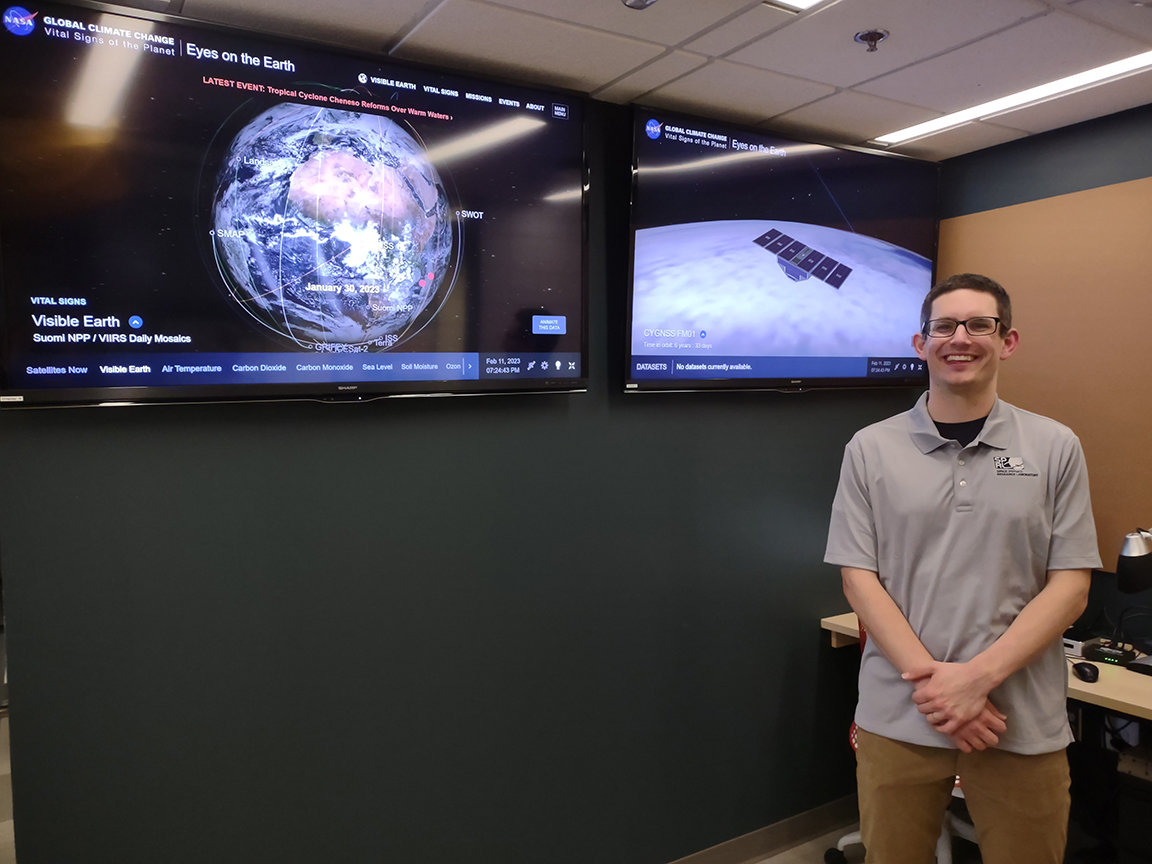Anthony Russel works as an Intermediate Software Developer at the Space Physics Research Laboratory (SPRL) and XTRM Labs. Hailing from Wixom, Michigan, he received his Bachelor of Science in Computer Science Engineering from Michigan State University. He develops software and supports data processing for the CYGNSS mission and SPRL.
Q. What is your engineering focus?
A. My engineering focus is in software development. Prior to joining SPRL, I developed websites, real time simulators, mobile apps, and data processing code for wetland classification and timber management. During my time at SPRL, I have supported data processing operations for the various science applications on the CYGNSS mission.
Q. How did you decide to pursue this line of work?
A. I initially got into programming in middle school because I loved video games. I learned some basics, so I could develop my own simple games. In college, I got a sense of the variety of focus areas software development has to offer. After spending a few years applying my software development background in different ways, I found I was most passionate about science applications and found my way to my current position at SPRL.
Q. Tell us more about your work. Could you give an example of a noteworthy project you have worked with?
A. Most of my time at SPRL has been with science operations for the CYGNSS project. I support continued algorithm development and enhancement on CYGNSS products. Two of the CYGNSS products that are the most noteworthy to me are the surface fluxes, which I worked on with Dorina Twigg, and the storm gridding products. Those were the first products where I contributed to software development right from the beginning. I felt a lot of pride in hearing the CYGNSS community present research they performed with these data products at the science team meetings.
Q. What is one of the greatest benefits or opportunities that have come from working in your field?
A. One of the greatest benefits has been working with brilliant people both at the University of Michigan and those we collaborate with. Throughout my time supporting the science operations of the CYGNSS mission, I have been able to learn much about signal processing and oceanography from some of the top people in the fields.
Q. When you think about your experience so far at the University of Michigan and SPRL, what gives you the most pride?
A. I take a lot of pride in seeing the positive impacts the science community has been able to make with the data we generate from the CYGNSS mission. The CYGNSS mission has helped with the understanding of hurricane wind activity, microplastics activity, and flooding analysis, all of which affect many people across the world.
Q. What are your future goals?
A. I look forward to continuing the science operations on the CYGNSS mission since it is a project I love working on. I will soon begin supporting the SunRISE mission, which aims to improve our understanding of solar storms. I’m excited to use what I’ve learned to support the software needs of future SPRL missions.
